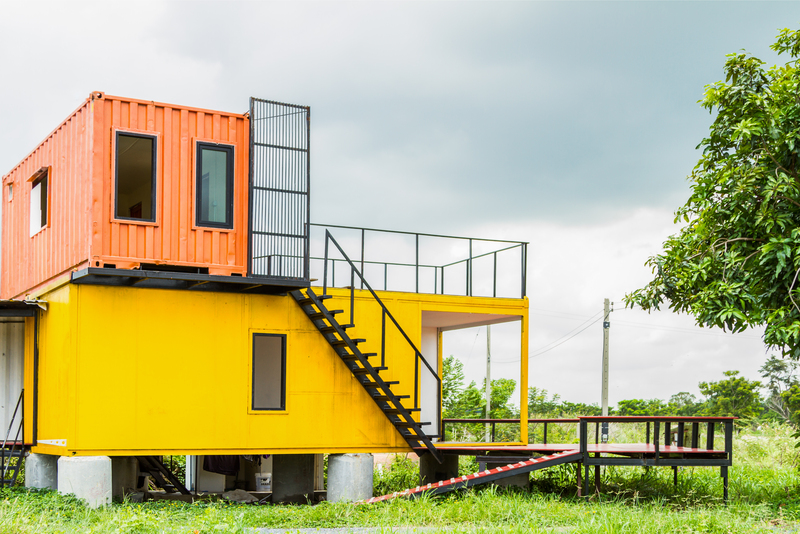Effective Methods for Safely Disposing of PPE Waste at Home or Work
The rise in personal protective equipment (PPE) use since the COVID-19 pandemic has brought significant safety benefits. However, the surge in masks, gloves, face shields, and other PPE items has also created a pressing environmental and health challenge: safe PPE waste disposal. Whether you are at home, an office, healthcare institution, or industrial workspace, understanding the effective and responsible methods for disposing of PPE waste is essential. This comprehensive guide explores proven strategies for PPE waste management, ensuring safety for people and the planet.
Understanding PPE Waste: What Is It?
PPE (Personal Protective Equipment) includes items designed to protect individuals from hazards, including infectious diseases, chemicals, and particulates. Common PPE items used at home or workplaces include:
- Face masks (disposable or reusable)
- Disposable gloves (vinyl, nitrile, latex)
- Face shields and safety goggles
- Protective gowns and coveralls
- Shoe covers and hairnets
When discarded, these materials become PPE waste. Improper disposal can lead to environmental pollution, transmission of infectious diseases, and harm to wildlife. That's why safe PPE disposal methods are vital.
The Importance of Responsible PPE Waste Disposal
Safe and effective disposal of PPE at home and work offers numerous benefits:
- Reduces the risk of cross-contamination (especially for infectious materials)
- Minimizes environmental impact caused by plastics and synthetic fibers
- Protects sanitation workers and the general public from potential exposure
- Complies with regulations and workplace safety standards
Improper management of PPE waste is not only a personal safety issue but also a societal responsibility. By adopting effective PPE waste management strategies, individuals and organizations can significantly curb the negative repercussions associated with medical and non-medical PPE items.

Key Principles of PPE Waste Handling and Disposal
When dealing with the disposal of used PPE, it's crucial to follow certain principles:
- Segregation: Separate PPE waste from general waste.
- Containment: Use appropriate containers or bags to reduce exposure.
- Disinfection: When possible, disinfect items before disposal.
- Labelling: Clearly mark waste to indicate the presence of potentially hazardous material.
- Compliance: Follow local and workplace guidelines for hazardous waste.
These basic strategies ensure that both home and workplace environments remain safe from contamination and unnecessary risk.
Effective Methods for PPE Disposal at Home
1. Segregate PPE Waste from Other Household Trash
Begin by designating a specific bin for disposing of PPE like masks and gloves. Avoid mixing PPE with recyclables or compostable waste. This reduces the risk of spreading pathogens and keeps household waste streams clean.
2. Use Double-Bagging for Containment
For extra safety, practice double-bagging: place PPE in one bag, tie it securely, and then place it in a second bag before disposing of it in your external trash. This extra barrier is especially important if someone in your home is ill or under quarantine. It reduces the risk of leaks and exposure to sanitation workers.
3. Disinfection Procedures Before Disposal
Whenever feasible, disinfect PPE items by spraying or wiping them with household disinfectant. While not always possible (especially for single-use items), disinfecting can minimize contamination risk, especially during outbreaks.
4. Handle Reusable PPE Carefully
- Wash reusable cloth masks and gloves with hot, soapy water after each use.
- Air dry thoroughly before reuse or storage.
- If reusable PPE is damaged or soiled beyond cleaning, dispose of it as you would single-use PPE.
Proper handling and regular cleaning extend the useful life of reusable PPE while keeping you safe.
5. Never Flush PPE Items
6. Safe Disposal of PPE During Illness or Quarantine
If a household member is infected or quarantined, take extra care:
- Set up a dedicated PPE waste bin lined with double bags in the isolation area.
- Wear gloves when handling filled bags and dispose of gloves after use.
- Wash hands thoroughly after handling any PPE waste.
- Arrange for PPE waste to be collected last, after all other waste streams.
Effective Methods for PPE Disposal at Workplaces
Workplaces--particularly healthcare, hospitality, and service environments--produce large quantities of PPE waste. These settings require systematic waste management strategies to ensure safety for employees and compliance with environmental regulations.
1. Set Up Clearly Marked PPE Waste Bins
- Position bins in entry/exit zones, workstations, and bathrooms.
- Use bins with tight-fitting lids or foot-operated pedals to minimize contact.
- Label bins PPE Waste Only: No Food or Recyclables.
2. Provide PPE Waste Disposal Training
Educate staff on proper PPE waste segregation and disposal procedures. Regular training reduces the incidence of incorrect disposal and enhances overall workplace safety.
3. Double-Bagging and Secure Sealing
Implement the double-bagging protocol, particularly in medical, dental, laboratory, and food-processing settings. Always tie off bags securely before removal, and don't overfill them to prevent spills.
4. Collaborate with Licensed Waste Management Companies
Contract with approved waste services experienced in handling medical and non-medical PPE waste. These professionals use regulated processes, such as incineration or autoclaving, to render hazardous materials safe for disposal or recycling.
5. Disinfect PPE Collection Points and Bins
- Schedule regular cleaning and disinfection of bins and surrounding areas.
- Replace liners frequently, especially in high-traffic areas.
6. Separate Reusable from Disposable PPE
- Provide labelled receptacles for reusable PPE like textile gowns or face shields needing cleaning/sterilization.
- Ensure clear signage to prevent mixing with single-use PPE streams.
7. Document and Monitor PPE Waste Volumes
Keep records of PPE waste generation and disposal to track trends, ensure compliance, and establish improvement targets for waste reduction.
Eco-Friendly Alternatives: Reducing PPE Waste
While safe disposal is imperative, the most sustainable solution is to reduce overall PPE consumption and waste. Here are some practical tips:
- Switch to Reusable PPE such as washable masks, face shields, and clothing where possible.
- Educate users about appropriate use--only wear PPE when necessary, and avoid overuse.
- Encourage responsible procurement by choosing recyclable or compostable PPE from trusted suppliers.
By making these small but significant shifts, both homes and workplaces can help lower the amount of PPE waste entering landfills.
Regulatory Guidelines and Standards for PPE Waste Disposal
Most countries issue official guidance for the handling and disposal of PPE. Employers and households should consult their local regulatory bodies (such as the CDC in the USA, HSE in the UK, or WHO internationally) for up-to-date instructions.
- Medical and healthcare settings must treat PPE as clinical or infectious waste and follow hazardous waste management procedures.
- Non-healthcare settings are often instructed to bag PPE waste and treat it as general waste if not visibly contaminated.
- Follow signage and colour-coding protocols (e.g., yellow bags for clinical waste).
Always stay updated, as regulations may change during outbreaks or national emergencies.
Common Mistakes in PPE Waste Disposal
- Mixing PPE items with recyclables, contaminating entire recycling batches.
- Flushing PPE items down toilets or sinks, causing sewage blockages.
- Leaving used PPE in public areas or open bins.
- Not washing hands after handling PPE waste.
- Overfilling bins, increasing the risk of spillage and exposure.
Avoiding these errors can drastically improve safety at home and in the workplace.
Innovative Solutions for PPE Waste Management
The global PPE disposal challenge has spurred new solutions, including:
- PPE recycling programs--some companies now recycle used masks and gloves into plastic pellets for manufacturing.
- Compostable PPE--biodegradable masks and gloves reduce landfill burdens.
- On-site PPE waste treatment--small-scale autoclaves and incinerators for healthcare and laboratory settings.
Seek out local recycling initiatives or eco-friendly PPE suppliers in your area to participate in these forward-thinking strategies.

Frequently Asked Questions About PPE Waste Disposal
Can disposable masks and gloves be recycled?
Generally, no. Most surgical masks and gloves are made from mixed polymers, which contaminate recycling streams. Specialized PPE recycling programs do exist in some regions, so check with local authorities.
Is burning PPE waste a safe option at home?
How should I dispose of reusable PPE that is damaged?
If reusable PPE can no longer be safely cleaned or repaired, dispose of it following the same method as single-use PPE: double-bag, secure tightly, and discard with non-recyclable waste.
What should offices do if local waste collection is limited?
Contact local government or waste management firms for guidance. Small offices can partner with larger organizations to arrange for scheduled hazardous waste pickups.
Conclusion: Taking Responsibility for PPE Waste Disposal
As homes and workplaces continue adapting to new health and safety standards, the proper disposal of PPE waste remains a priority. By following the methods outlined here--segregation, double-bagging, disinfection, and compliance--you can protect yourself, your loved ones, and the environment.
Remember:
- Always wash your hands after handling PPE waste.
- Keep PPE waste separate from other trash and recyclables.
- Stay informed about local PPE disposal guidelines.
- Choose reusable or eco-friendly PPE options when possible.
Effective PPE waste management starts with individual action and collective responsibility. Be proactive, stay informed, and help ensure a cleaner, safer future for all.
